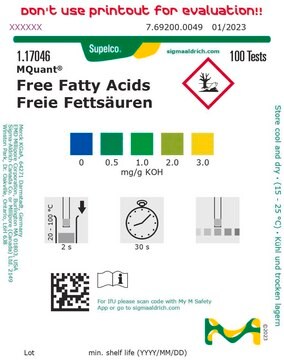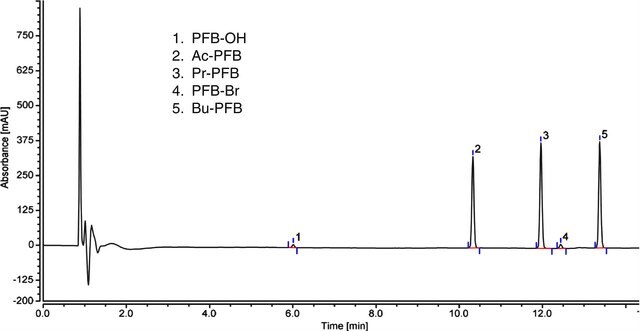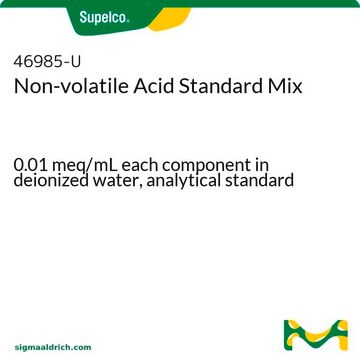EC10A-1KT
Fatty Acid Kit
(individually packaged, quantities indicated), analytical standard
Sign Into View Organizational & Contract Pricing
All Photos(1)
About This Item
UNSPSC Code:
85151701
NACRES:
NA.24
Recommended Products
grade
analytical standard
Assay
99-100% (GLC, TLC)
CofA
current certificate can be downloaded
packaging
pkg of 1 kit
concentration
(individually packaged, quantities indicated)
technique(s)
HPLC: suitable
gas chromatography (GC): suitable
application(s)
food and beverages
format
neat
functional group
carboxylic acid
ester
storage temp.
2-8°C
General description
A kit of even-carbon fatty acids. Each component individually packaged at quantities indicated.
Application
Refer to the product′s Certificate of Analysis for more information on a suitable instrument technique. Contact Technical Service for further support.
Analyte
Description
Arachidic acid 5 g
Behenic acid 5 g
Decanoic acid 10 g
Dodecanoic acid 10 g
Hexanoic acid 10 mL
Lignoceric acid 1 g
Myristic acid 10 g
Octanoic acid 10 mL
Palmitic acid 10 g
Stearic acid 5 g
See All (10)
related product
Product No.
Description
Pricing
Signal Word
Danger
Hazard Statements
Precautionary Statements
Hazard Classifications
Acute Tox. 3 Dermal - Acute Tox. 4 Oral - Aquatic Chronic 3 - Eye Dam. 1 - Skin Corr. 1C
Storage Class Code
6.1C - Combustible acute toxic Cat.3 / toxic compounds or compounds which causing chronic effects
Choose from one of the most recent versions:
Already Own This Product?
Find documentation for the products that you have recently purchased in the Document Library.
Customers Also Viewed
Feng Wang et al.
Reproduction (Cambridge, England), 153(2), 175-185 (2016-12-07)
Hormone-sensitive lipase-knockout (HSL-/-) mice exhibit azoospermia for unclear reasons. To explore the basis of sterility, we performed the following three experiments. First, HSL protein distribution in the testis was determined. Next, transcriptome analyses were performed on the testes of three
Our team of scientists has experience in all areas of research including Life Science, Material Science, Chemical Synthesis, Chromatography, Analytical and many others.
Contact Technical Service












